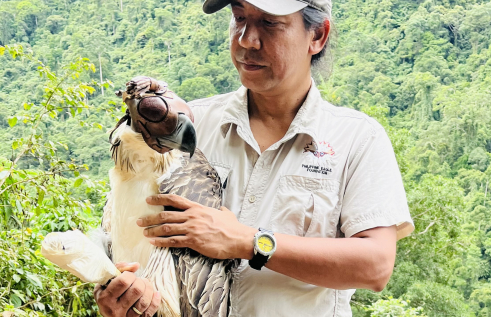RIEL seminar series
Evolution of the Darwin Harbour Numerical Model
| Presenter | Dr Hemerson Tonin and Carlos Simão | |
|---|---|---|
| Date |
|
|
| Time |
to
|
|
| Contact person | E: riel.outreach@cdu.edu.au | |
| Location |
CDU Casuarina Campus Yellow 1.1.39 and online If you wish to attend this seminar online: https://charlesdarwinuni.zoom.us/j/85482581666 |
|
| Open to | Public | |
Darwin Harbour is of environmental, social and economic importance to Territorians. Ecologically the harbour is in good health and is one of the least disturbed harbours in Australia. However, it is under pressure from development and requires strong management to ensure it retains environmental and social value. Knowledge of the environmental attributes of the Harbour is essential to ensure management decisions are relevant to the region. In 2009, the Australian Institute of Marine Science (AIMS) implemented a hydrodynamic model for Darwin Harbour. In the years since, AIMS has applied our Darwin Harbour model for projects ranging from navigation support (with the Darwin Port Authority through providing current files for pilots simulator) to water quality studies (e.g., resulting from dredging operations or effluent discharges in and around Darwin Harbour).
Over the years, the evolution of computational capacity (speed and storage) and also of numerical models (through the development of environmental sciences) has been massive, inducing the implementation of more complex models with greater capacity to represent (mimic) the real world. The improvement in numerical modelling is resulting in more comprehensive assessments of natural and anthropogenic impacts. AIMS has been accumulating expertise for over 15 years in the numerical modelling of Darwin Harbour and Northern Australia. The purpose of this presentation is to give a snapshot of the evolution of numerical models and techniques applied by the AIMS team of scientists in order to maintain the highest level of reliability of the outcomes and give the best possible support to the decision-making process.
Dr Hemerson's early career was as a physical oceanographer at an environmental consulting firm, specializing in numerical modelling in water bodies. After a four-year hiatus, period that he earned his PhD in Earth Sciences, he returned to the environmental consulting industry as a senior physical oceanographer, engaging with clients and mentoring collaborators in the area of numerical modelling. In 2011, he was hired by the Australian Institute of Marine Sciences, where he remains since then. Hemerson holds a bachelor's degree of Physics with a minor of Physical Oceanography from the University of São Paulo, a Master of Physical Oceanography from the same university and a PhD of Earth Sciences from Flinders University of South Australia.
Carlos Simão is Coastal Oceanographer at AIMS. He has a solid experience in environmental studies and marine science, working across industry, government, academia and conservation sectors, focusing on coastal science, surface water and numerical modelling. Carlos holds a degree in Environmental Engineering with MSc in Oceanic Engineering. Currently, he is a PhD Candidate in the School of Science, Technology and Engineering at the University of Sunshine Coast.
Related Events

'Culture-based conservation' approach to supporting governance of Indigenous territories
Indigenous Peoples are crucial for the long-term persistence of the Earth’s biodiversity and ecosystem services. In the Philippines, the Indigenous Peoples Rights Act of 1998 protects Indigenous rights to own and manage territories. The forests of Indigenous territories are habitats of the Philippine eagle – a forest eagle that is endemic to the Philippines where it is a national bird and an apex forest predator.
Read more about 'Culture-based conservation' approach to supporting governance of Indigenous territories
Carbon and water adventures in north Australia
With climate change and increasing land use pressures there is more and more demand for knowledge of carbon dynamics and water use as well as water resource management. Lindsay’s research is focused on providing better understanding of the biophysical environment of tropical land and water systems.
Read more about Carbon and water adventures in north Australia
From CCTV to AI
Fish farms have historically been a black box in terms of understanding the behavioural needs and preferences of the fish within them, as the only chance to assess what they are up to is when they break the surface. Sunil has been monitoring fish behaviour below the surface of farms for 35 years.
Read more about From CCTV to AI
